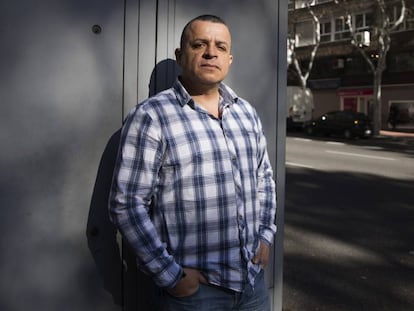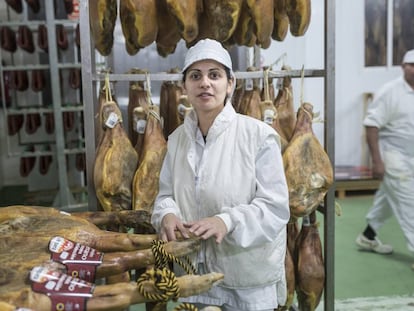Why Venezuelans from all generations are flocking to Madrid
No other influx of immigrants has been this intense in Spain¡¯s recent history, with more than 20,000 people from Venezuela arriving every year since 2018
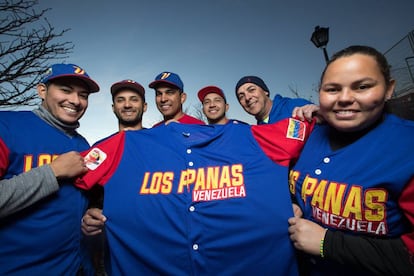
In 2008, there were so few people from Venezuela in Madrid that Jos¨¦ Luis Mar¨ªn and his son-in-law Fernando Rodr¨ªguez had to seek out their compatriots by driving their Opel Astra around the city with the trunk filled with the Venezuelan cheese they made. They struck lucky in Las Tablas district, where the headquarters of the oil firm T¨¦cnicas Reunidas employs dozens of Venezuelan engineers.
Venezuelans were the largest demographic immigrating to the Madrid region in the first half of 2019: 11,899
Nowadays, these same cheese-makers sell their products in the supermarket giants Carrefour and El Corte Ingl¨¦s, and their company, Antojos Araguaney, employs 120 people. In fact, business is so good that they plan to move to a new 3,000-square-meter warehouse in Rivas-Vaciamadrid in the southeast of the capital, having outgrown their current 700-square-meter space.
The success of Antojos Araguaney is due to both hard work and the expansion of their target market. Venezuelans were the largest demographic immigrating to the Madrid region in the first half of 2019: 11,899, according to the latest data released by Spain¡¯s National Statistics Institute (INE) earlier this month. This marks a massive influx of people from a single country, one unparalleled in recent years. No other immigrant group has grown by more than 20,000 a year since 2008, when the INE began publishing relevant data. But over the past two years, Venezuelans have been coming in even greater numbers and there are now probably more than 100,000 living in the Madrid region. The exact figure will be released in April when the INE updates the census.
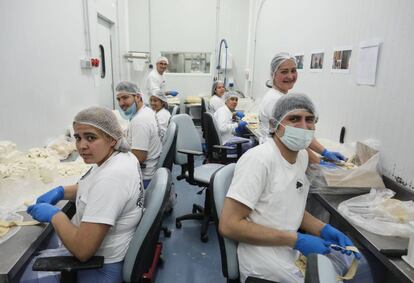
Mar¨ªn and Rodr¨ªguez left Venezuela during President Hugo Ch¨¢vez¡¯s first years in power, before the situation got ugly. Since then, they have witnessed their compatriots flocking to the Spanish capital seeking refuge from the political and economic chaos. Now Antojos Araguaney is a source of pride for Venezuelans in Madrid, and Mar¨ªn and Rodr¨ªguez have become role models for entrepreneurs seeking to prosper in Spain. ¡°I always give them the same advice ¨C work, work and work,¡± says Mar¨ªn, who, at 69, has no retirement plans.
Madrid receives only a small portion of Venezuelans on the move. Others head for the US, neighboring Latin-American countries or other cities within Europe. According to the United Nations, 4.6 million citizens have left their homeland since 2015, a figure that could rise to 6.5 million this year. It is a scenario that has an impact on host cities comparable to that of the exodus from Syria. The cultural footprint is felt everywhere in Madrid: at the Maravillas Market, in the ubiquitous sale of arepas, a maize-based bread cake, and the soaring fortunes of the capital¡¯s softball league, Venezuela¡¯s favorite sport. But while Venezuelans are making their presence felt in Madrid, Romanians ¨C 136,661 ¨C and Colombians ¨C 100,732 ¨C remain the capital¡¯s largest ethnic minority groups.
As the numbers have grown, the profile of the typical Venezuelan immigrant has changed; those coming now are doing so with fewer and fewer resources, according to Cristina Isacura, a Venezuelan immigration lawyer who caters to their needs in her office in the central Puerta del Sol square.
Eight years ago, it was mainly young professionals with savings or members of the wealthy elite who bought luxury apartments in the Salamanca district. But for the last two years, many of those coming find themselves in desperate circumstances, putting pressure on the city¡¯s soup kitchens and shelters. ¡°I¡¯ve seen children sent alone by their parents, some of whom are malnourished ¨C that¡¯s happening a lot,¡± says Isacura. ¡°I have talked to people who cannot imagine there are Venezuelans without enough money to buy a train ticket.¡±
Homeless engineers
A number of older people are also coming ¨C the parents and grandparents of a younger generation already established in Spain. It is a form of insurance, given that medicine and healthcare are scarce back home. According to Tom¨¢s P¨¢ez, coordinator at the Observatory of the Venezuelan Diaspora, most of the young are university educated but work in manual jobs as deliverymen or waiters. They sell their homes at rock bottom prices to pay for the flight. ¡°Apartments measuring 200 square meters in previously sought-after areas of Caracas are selling for less than €60,000 euros,¡± says P¨¢ez.
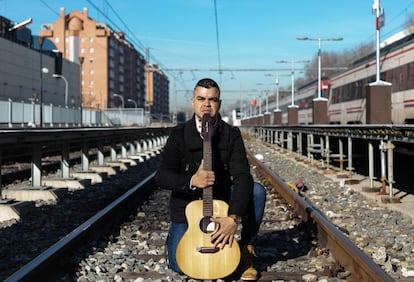
The wealthier immigrants are able to buy a home and obtain their legal residence permit thanks to the golden visa program. The rest usually enter into the long process of applying for asylum. If they have little to fall back on, they can end up on the street. Erwuin Contreras, a 33-year-old physiotherapist, sold his precious Volkswagen Beetle to pay for his airfare to Madrid. Things didn¡¯t go as planned and he spent some time sleeping in an ATM vestibule. He now sings on the subway and earns between €35 and €40 a day. ¡°My dream is to record my song On the rails of Madrid, so my story ¨C our story ¨C can be told,¡± he says.
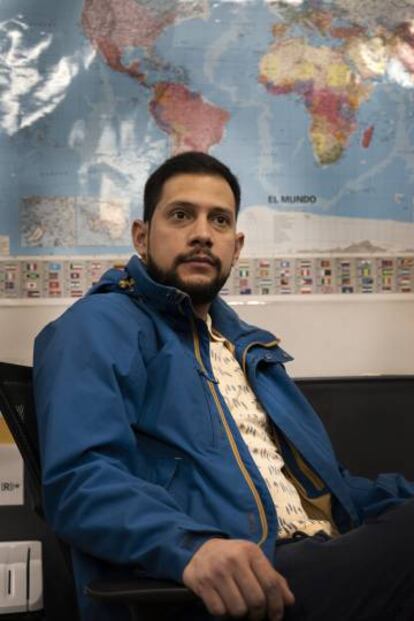
Daniel P¨¦rez is a 29-year-old biomedical engineer who has only been in Madrid for a month and a half. In that time, he has slept on the streets, in a church and is currently in a shelter along with his partner who is an accountant. Despite what they¡¯ve been through, he feels optimistic. ¡°I have met good people here and made good contacts that will help me when I get a work permit,¡± he says.
These stories contrast sharply with those of P¨¦rez and Contreras¡¯ moneyed compatriots. For example, the Cohen family owns Spain¡¯s largest outlet mall, the Sambil in the satellite city of Legan¨¦s. Others have bought apartments worth more than €2 million in the Salamanca district. At the same end of town, Kika Payares has opened InCasa, an interiors shop along with three business partners, appealing to the avant-garde tastes of wealthy Venezuelans. A sculpture of a pair of red lips that is almost half a meter wide is going for €1,170. Now, however, they are introducing more classical pieces designed to appeal to a wider clientele as the influx of wealthy Venezuelans threatens to dry up. ¡°The [rich Venezuelan] who wanted to leave has already done so,¡± says Payares.

?scar Larrea, general manager in Madrid of real estate consultant Engel & Volkers, says that home purchases by Venezuelans in Salamanca and other high-end areas of Madrid have already peaked. Venezuelans accounted for 50% of property purchases over €1 million in the last quarter of 2017 and the first of 2018. That has since fallen to around 20%.
Juan Carlos Guti¨¦rrez, a lawyer with Cremades & Calvo-Sotelo, believes that this is due in part to the fact that Spain has clamped down on Ch¨¢vez-era money launderers. ¡°Growing pressure is forcing the Boliburgues [the Chavez elite] to take their money to Russia, Turkey and other countries where keeping money is much riskier,¡± says Guti¨¦rrez.
As the numbers have grown, the profile of the typical Venezuelan immigrant has changed
Many Venezuelans in Madrid are less than comfortable living close to certain members of the Ch¨¢vez business classes, such as Alejandro Betancourt, president of the Spanish Hawkers sunglasses chain who bought a mansion in Santa Cruz de Retamar, in Toledo in 2012.
According to Rolando Seijas, the founder of SNB Capital, a Venezuelan real estate investment company in Madrid, his country¡¯s elite has entered a new phase and moved into entrepreneurship. Having bought a home and settled in, they are rolling up their sleeves to get down to business. There is, says Seijas, a boom in new restaurants ¨C he himself has opened two in the capital, called The Lobstar, which specialize in US-style seafood cuisine.
He explains that when an immigrant arrives in a new place, he inevitably goes through an adjustment period. ¡°The first three years of the immigration process are [spent] mourning,¡± he says. ¡°You can¡¯t start a business when you are physically present in one country but your heart is in another.¡±
Statistics ¨C only half the story
The data on Venezuelan immigrants in Madrid belies the real size of the community, according to experts. The official figures cover those born in Venezuela and now residing in Madrid, but do not include those born in Spain, Italy or Portugal who emigrated to Venezuela in the second half of the 20th century and have now made their way back, says Tom¨¢s P¨¢ez, coordinator at the Observatory of the Venezuelan Diaspora. There are also many second-generation Venezuelans in Madrid ¨C the children of newcomers who were born here.
Many more Venezuelans come to Madrid than to any other region in Spain, including Catalonia and the Canary Islands. On January 1, 2019, there were 323,575 Venezuelan-born immigrants in Spain. In the next six months, 35,652 more will arrive, according to the INE¡¯s Migration Statistics.
English version by Heather Galloway.
Tu suscripci¨®n se est¨¢ usando en otro dispositivo
?Quieres a?adir otro usuario a tu suscripci¨®n?
Si contin¨²as leyendo en este dispositivo, no se podr¨¢ leer en el otro.
FlechaTu suscripci¨®n se est¨¢ usando en otro dispositivo y solo puedes acceder a EL PA?S desde un dispositivo a la vez.
Si quieres compartir tu cuenta, cambia tu suscripci¨®n a la modalidad Premium, as¨ª podr¨¢s a?adir otro usuario. Cada uno acceder¨¢ con su propia cuenta de email, lo que os permitir¨¢ personalizar vuestra experiencia en EL PA?S.
?Tienes una suscripci¨®n de empresa? Accede aqu¨ª para contratar m¨¢s cuentas.
En el caso de no saber qui¨¦n est¨¢ usando tu cuenta, te recomendamos cambiar tu contrase?a aqu¨ª.
Si decides continuar compartiendo tu cuenta, este mensaje se mostrar¨¢ en tu dispositivo y en el de la otra persona que est¨¢ usando tu cuenta de forma indefinida, afectando a tu experiencia de lectura. Puedes consultar aqu¨ª los t¨¦rminos y condiciones de la suscripci¨®n digital.
